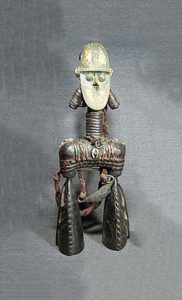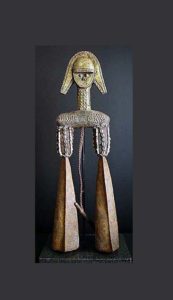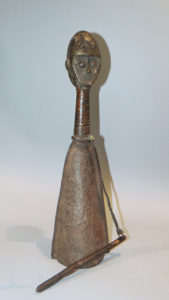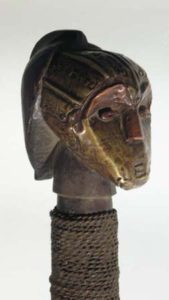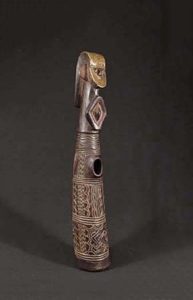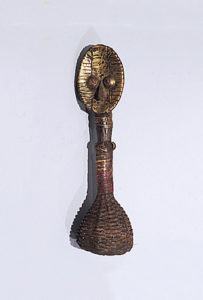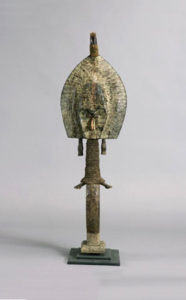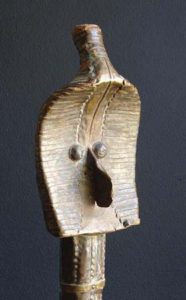Kota
The Kota live on the eastern side of Gabon, on the frontier with the Republic of Congo. They are comprised of several small tribes such as the Mahongwe, the Sango, the Obamba and the Shamaye, who all practice similar ceremonies. It is though they migrated southwards during the 18th century and settled in the upper valley of the Ogooué River, in a forest environment. Their main resources come mostly from hunting and agriculture.
Historically, the Kota buried their Chiefs, but often their bones (especially their skull) were later exhumed and placed with magical objects (shells, seeds, fruits) in a bark box or a basket called a Bwete, in which a carved figure was inserted. The Bwetes were the focus of offerings and prayers aimed at bringing good fortune to the clan.
These reliquary baskets were kept for generations, but during the 20th century, when religious beliefs changed, they were abandoned or even destroyed. Between 1940 and 1964, a movement referred to as the ‘culte des demoiselles’ was responsible for the destruction of most of these traditional objects.
Kota masks are scarce. They are principally helmet masks and have simplified features such as tubular eyes, large, incised brows, and a crested coiffure. They are often covered with pigments and were used in initiation ceremonies.”
“Six different regional styles of Kota figures (statues) have been identified:
- Mahongwe(also called Ossyeba) figures have a truncated almond-shaped face covered with metal wires.
- Shamayefigures have an almond-shaped face covered with metal wires and sheets and framed by two lateral flanges.
- Obambafigures have an oval face partly covered with metal sheet, lateral flanges and a curved coiffure.
- Kota figures have an oval face, curved coiffure and lateral flanges ending in horizontal line.
- Upper Ogooue figures have an oval face, sometimes a curved coiffure and S-shaped lateral flanges.
- Sangofigures have a small, elongated head without any flanges or coiffure.”
Source: Baquart, Jean-Baptiste. The Tribal Arts of Africa. New York: Thames and Hudson Inc. 1998. Print.

